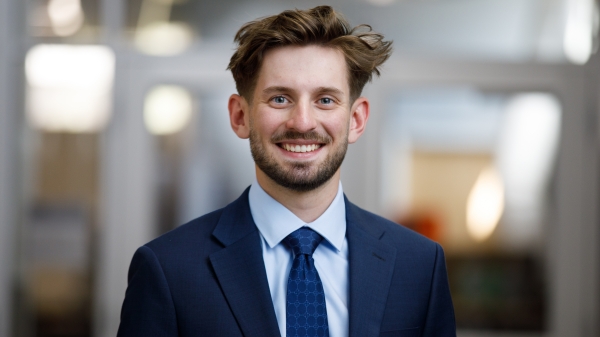ASU physics chair elected to the American Physical Society Fellowship

Patricia Rankin. Photo by Meghan Finnerty
The American Physical Society (APS) has elected Patricia Rankin, the chair of the Department of Physics at Arizona State University, as a 2024 fellow for her leadership in promoting the advancement of women and other underserved minorities in the physical sciences.
The program recognizes members who have made considerable contributions to the field of physics. No more than one-half of 1% of APS members are recognized by their peers for election to the status of fellow.
This year, 149 fellows were selected for their work and dedication to science. Rankin has been specifically honored with the Forum on Diversity and Inclusion Fellowship.
“I appreciate the recognition of my work — and the work my colleagues put in to nominate me for this honor,” Rankin said. “It provides an opportunity for me to reflect on my accomplishments and the progress that has been made. I am delighted to be at ASU to continue working towards the goals embodied in the ASU Charter.”
Rankin’s achievements not only include her research on particle physics but also her efforts to increase female representation in the field.
Last year, she forged a new partnership between Arizona State University and the Association for Women in Science to help further advocate for women in STEM and provide a host of free resources for students and faculty. One program in particular, The Inclusion Habit, allows members to engage in daily activities to learn about bias, transform their mindset, enhance empathy and create new habits.
“We are honored to have Professor Rankin represent ASU as an American Physical Society’s Fellow,” said Kenro Kusumi, senior vice provost and dean of The College of Liberal Arts and Sciences at ASU. “This recognition of her research and leadership exemplifies her commitment to revolutionizing the field of physics.”
More Science and technology

Cracking the code of online computer science clubs
Experts believe that involvement in college clubs and organizations increases student retention and helps learners build valuable social relationships. There are tons of such clubs on ASU's campuses…
Consortium for Science, Policy & Outcomes celebrates 25 years
For Arizona State University's Consortium for Science, Policy & Outcomes (CSPO), recognizing the past is just as important as designing the future. The consortium marked 25 years in Washington, D…

Hacking satellites to fix our oceans and shoot for the stars
By Preesha KumarFrom memory foam mattresses to the camera and GPS navigation on our phones, technology that was developed for space applications enhances our everyday lives on Earth. In fact, Chris…